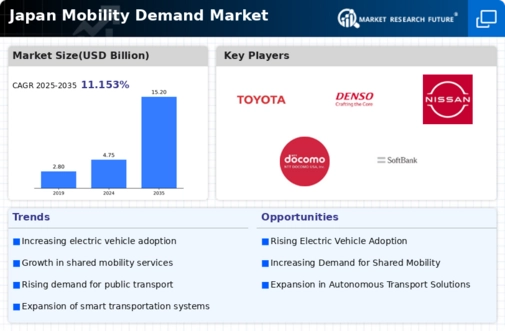A number of important market factors are causing major changes in the Japanese mobility demand market. The significant focus on environmental preservation and sustainability is one of the main motivators, as it has led the government and people to look for more environmentally friendly modes of transportation.
Numerous initiatives, such the promotion of electric cars (EVs) and the construction of extensive charging infrastructure throughout urban areas, illustrate this trend. The government of Japan has established definite targets for cutting greenhouse gas emissions, which increases the appeal of environmentally friendly transportation options.
The use of shared mobility services has increased noticeably in recent years, substantially altering Japan's transportation system. Ride-sharing and bike-sharing programs are being used more and more in urban regions, enabling effective mobility in congested urban settings.
In response to commuters' need for convenience, cutting-edge technologies such as smartphone apps that enable ride-hailing services have become popular. Furthermore, there are a lot of options to investigate when it comes to integrating cutting-edge technologies like artificial intelligence and autonomous driving into public transportation networks.
This offers the possibility of improved travel efficiency and safety. Collaborations between different stakeholders, such as local governments, tech companies, and automakers, also promote the drive towards a smarter transportation network.
Japan's elderly population is another trend that is influencing mobility requirements and increasing demand for more accessible modes of transportation. The need for specialized services serving the elderly is rising as a result of the government's aggressive search for ways to accommodate them.
All things considered, the dynamic interaction of these factors portends a turning point for Japan's mobility industry, influencing the nation's transportation environment going forward.






